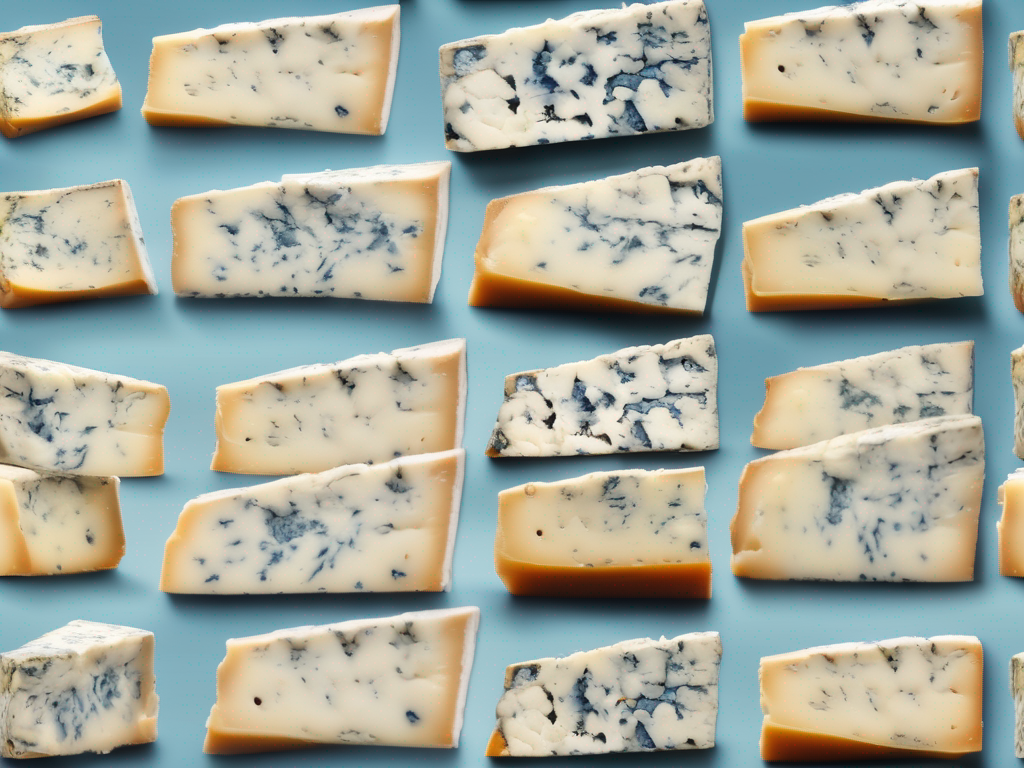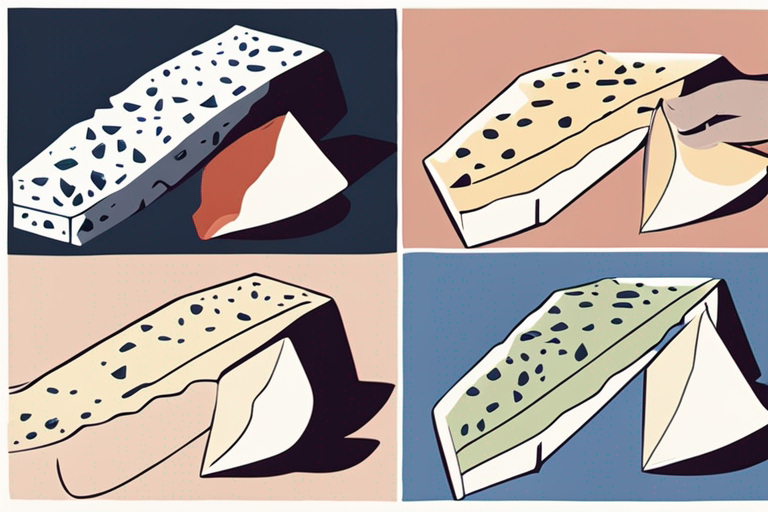
Is Your Blue Cheese Wedge Still Safe to Eat?
Get Your Free Food Safety Cheat Sheet
30 most common foods with instant answers. Print it and stick it on your fridge—completely free!
Is Your Blue Cheese Wedge Still Safe to Eat?
Blue cheese is a beloved and flavorful cheese known for its distinct blue veins and pungent aroma. However, like all dairy products, blue cheese can spoil if not stored properly or if it is past its prime. In this blog post, we will discuss the signs that indicate your blue cheese wedge has gone bad and provide tips on how to store it correctly to prolong its shelf life. (Blue cheese wedge)
Understanding Blue Cheese
Before we delve into the signs of spoilage, let's first understand what blue cheese is and how it is made. Blue cheese is a type of cheese that is typically made from cow's milk, although it can also be made from sheep's or goat's milk. The cheese gets its characteristic blue veins from the introduction of mold spores, most commonly Penicillium roqueforti or Penicillium glaucum, during the cheese-making process. These mold spores give blue cheese its unique flavor and appearance.
Blue cheese is aged for a certain period to allow the mold to grow and develop its distinctive characteristics. During this aging process, the cheese undergoes enzymatic changes that contribute to its flavor profile. However, as blue cheese ages, it becomes more susceptible to spoilage.
Signs of Spoiled Blue Cheese
Here are some common signs that indicate your blue cheese wedge may have gone bad:
1. Mold Growth
- Expected Mold: Blue cheese is known for its blue veins, which are a result of intentional mold growth. However, if you notice mold growth that is fuzzy, pink, or orange in color, it is a sign that the cheese has spoiled.
- Excessive Mold: While mold is a natural part of the aging process for blue cheese, excessive mold growth on the surface or throughout the cheese is a sign of spoilage.
2. Off Odor
- Ammonia Smell: Blue cheese has a pungent aroma due to the mold present in it. However, if the cheese smells strongly of ammonia or has a rancid odor, it is a sign that it has gone bad.
3. Texture Changes
- Slimy Texture: If the blue cheese feels slimy or sticky to the touch, it is an indication that it has spoiled.
- Crumbly or Dry: On the other hand, if the cheese becomes excessively dry or crumbly, it may be past its prime and not suitable for consumption.
4. Off-Flavors
- Bitter Taste: While blue cheese has a tangy and slightly salty flavor, if you detect a bitter or sour taste, it is a sign that the cheese has gone bad.
Proper Storage Tips for Blue Cheese
To ensure the longevity and quality of your blue cheese wedge, follow these storage tips:
-
Refrigeration: Store your blue cheese wedge in the refrigerator at a temperature of around 35-45°F (1.6-7.2°C). Keep the cheese wrapped in wax paper or parchment paper to allow it to breathe.
-
Airflow: Blue cheese needs to breathe, so avoid sealing it in airtight containers or plastic wrap. Opt for loosely wrapping it in paper or placing it in a cheese storage bag.
-
Cheese Paper: If available, use cheese paper to wrap your blue cheese. Cheese paper allows the cheese to breathe while also maintaining the proper level of humidity.
-
Isolation: Store blue cheese away from other strong-smelling foods in the refrigerator to prevent it from absorbing unwanted odors.
-
Use It Promptly: Blue cheese is best consumed within a few weeks of purchase. Try to use it promptly to enjoy it at its peak flavor.
Conclusion
In conclusion, blue cheese is a delightful and flavorful cheese that can enhance a variety of dishes. By being aware of the signs of spoilage and following proper storage practices, you can enjoy your blue cheese wedge while ensuring its safety and quality. Remember to trust your senses when determining if blue cheese has gone bad and always err on the side of caution when in doubt. Enjoy your blue cheese responsibly and savor its unique taste and texture. (Blue cheese wedge)

Authoritative Food Safety References
These agencies and university labs inform every tip and health precaution we publish.
USDA FoodKeeper – Cold Storage Guidelines
Official refrigerator, freezer, and pantry timelines maintained by the U.S. Department of Agriculture.
Visit USDA FoodKeeperFDA Produce Safety Rule & Grower Guidance
Field-to-fridge handling practices that prevent contamination of fruits, vegetables, and leafy greens.
Visit FDA Produce SafetyCDC Foodborne Illness Prevention Hub
Surveillance-backed guidance on pathogens, symptoms, and steps to reduce foodborne illness risk.
Visit CDC Food SafetyUC Davis Postharvest Technology Center
University research detailing optimal storage atmospheres for produce after harvest.
Visit UC Davis PostharvestPenn State Extension – Home Food Preservation & Safety
Peer-reviewed extension bulletins on safe canning, chilling, and reheating practices.
Visit Penn State ExtensionHow can I tell if my blue cheese is still safe to eat?
Can I eat blue cheese if it has passed its expiration date?
How should I store blue cheese to ensure its freshness?
Can I freeze blue cheese to prolong its shelf life?
Is it safe to eat blue cheese if I am pregnant or have a weakened immune system?
Get Your Free Food Safety Cheat Sheet
30 most common foods with instant answers. Print it and stick it on your fridge—completely free! Want more? Upgrade to the complete guide with 70+ foods.
Scan your food directly and get instant safety info using our AI-powered camera feature.